On which side of the plate is the fork placed according to etiquette?

Restaurant etiquette is a delicate art that deserves careful study. Not only workers and frequent visitors to the service industry should be familiar with some basic rules and features of this area in order to avoid possible awkward situations when doing serving yourself. It is necessary to learn in advance about the ways of serving cutlery and other important little things that are of great importance in table etiquette.
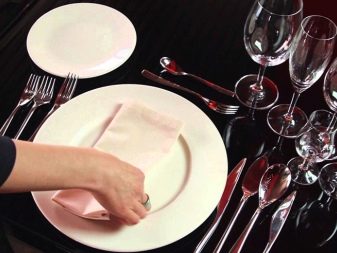
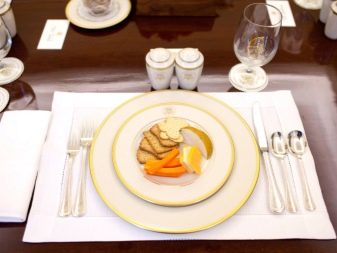
Peculiarities
There are a number of consistent nuances when decorating a table:
- The serving process begins with the selection of the necessary appliances. The number of forks, spoons and knives depends directly on the number of guests and the dishes served, but it is important to remember that it is inappropriate to mix and take out the entire collection of instruments available in the arsenal.
- Appliances should be chosen correctly, starting from the official reception, the expected guests and the size of the table.
- There are three types of sets: basic, snack and dessert. Every house definitely has a basic set. Any of the sets necessarily includes a spoon, fork and knife, but the sizes of the devices will vary greatly.
- The serving may vary depending on the theme of the reception, the food served and the scale of the event.
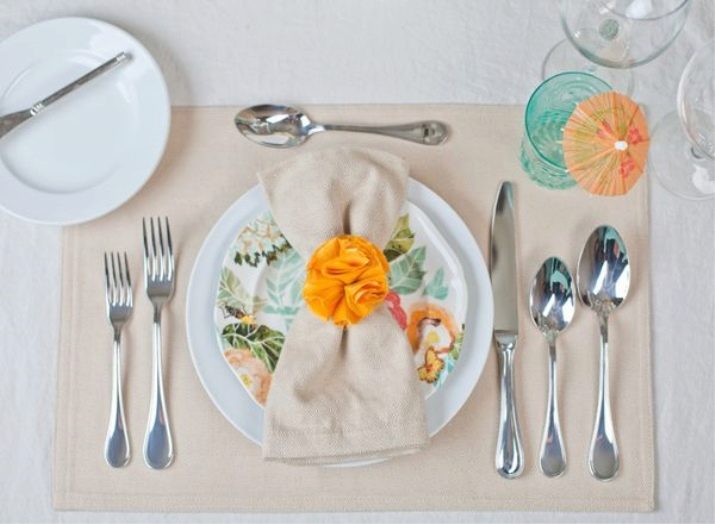
How to pre-serve?
When starting table setting, you should also know that there are different options: basic, formal and informal table setting. Each variety should be considered in more detail:
- Basic serving includes the obligatory presence of a "base".The basic set assumes the presence of a plate, fork, spoon, knife, glass of water and napkins. If first courses are not planned for the entire meal, a spoon is easily excluded from this list.
- An informal serving style is perfect for a dinner with friends or a themed brunch. In this case, a large number of snack plates are added, hence, cutlery, glasses or other types of containers for drinks.
- The formal serving option involves formal events as an occasion: celebrating memorable events, holidays, lunches with colleagues or meals during negotiations.
In this case, the devices are most often changed and served more than once a night, which includes separate serving options for dessert dishes and tea drinking.
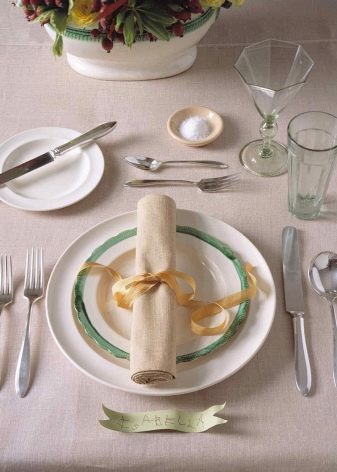
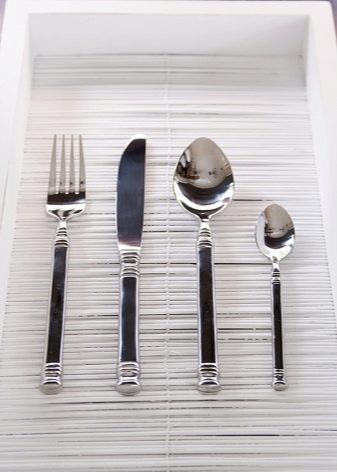
The biggest difficulties arise in the distribution of devices. Here it is worth remembering the basic rule: the sequence of the arrangement of the instruments reflects the order in which they are usedTherefore, on the outside of the plate, the first for the guest will be cutlery for snacks or any other dish served first. The cutlery is always distributed around the main dish. If you remember this one rule, you can already avoid many awkward situations when setting the table yourself for dinner or any other meal.
To show your deeper knowledge, it is enough to understand which side to put various devices on. And here I have my own conventions. For example, knives, even if there are several, are always placed on the right side of the plate. Their blades always face the plate.
If the meal includes a first course, then the soup spoon is placed between the knives for the main course and appetizer.
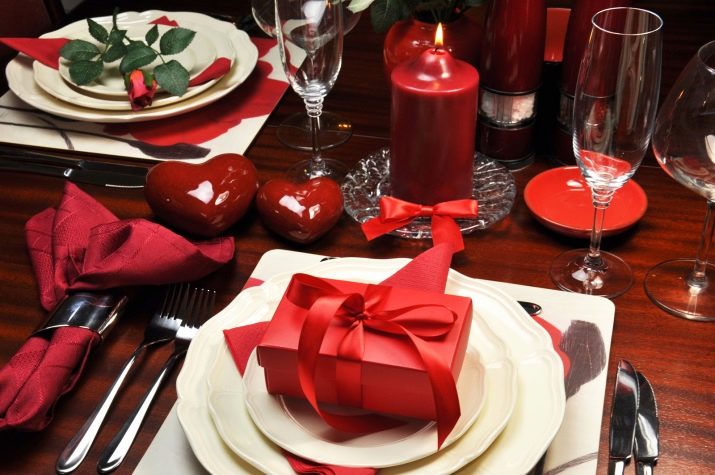
Forks are placed on the left side of the plate. In addition, the side when serving means which hand to take the appliance. This simple rule also makes it easier for guests to understand the intricacies of restaurant etiquette.
It is important not only to arrange forks and spoons for dinner in the correct order, but also to observe certain distances between them. So, the distance between each individual device should be at least half a centimeter, and the ends of the handles of the devices should be at a distance of 1.5-2 centimeters from the edge of the served table.

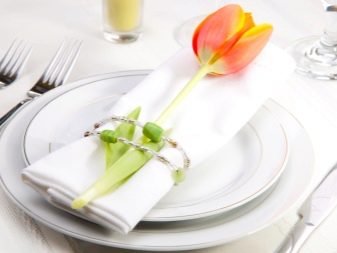
How should the cutlery lay during the meal?
This question is the second most popular within the framework of basic concepts of restaurant etiquette. The position of the appliances during the meal is a separate requirement for the service personnel or the host. Very often you can find the supply of appliances exclusively with a dish and their subsequent change. So, it is very common to wrap appliances in napkins. The guest or client, having deployed the devices, should also be aware of their further movement on the table during and after the meal and the significance of these movements.
For example, to avoid a prematurely cleaned meal, you can signal that you are temporarily interrupting a meal or are still continuing the process by placing the cutlery on a plate. In this case, the sides of the arrangement remain the same: on the left - a fork or spoon, on the right - a knife.
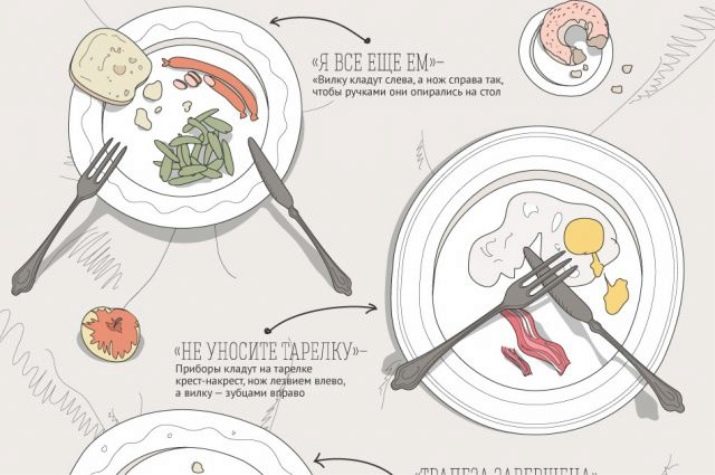
How to put it after a meal?
To signal that you are ready to serve the next dish, it is enough to cross the cutlery right on the plate, turning the knife to the left and the fork to the right. If the meal is already finished, you need to arrange the cutlery parallel to each other on the diagonal of the plate.
In the European style, you can observe that the prongs of the fork will be turned towards the cymbal, and in the American fork, the teeth will be laid up.

Beautiful layout examples
One way or another, at present there is an opinion that only in restaurant establishments they observe all the intricacies of serving. In fact, this knowledge can be applied to all kinds of family celebrations and other important holidays. There are several common examples:
- Serving a romantic dinner for two assumes an intimate atmosphere, subdued light and, of course, the presence of suitable glasses. Additional accessories in the jewelry add a special touch of intimacy. You can start by choosing a color scheme, relying on the preferences of the second half of the lice, and then you can add significant details: put your favorite flowers, ribbons, souvenirs, a general photo. Music and lighted candles of various shapes and sizes will become an integral accompaniment.
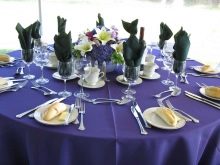
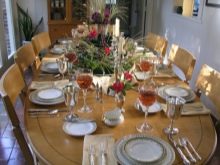

- An important celebration in a close family circle suggests respect for tradition and classic serving style. The difference between generations is of particular importance, therefore, both the serving style and the general design of the table should be as generally accepted as possible, not too bright, but solemn in their classics. Restraint combined with solemnity can be expressed in beautifully selected expensive dishes (crystal products are appropriate), cutlery, snow-white napkins and the presence of accents, for example, gold and silver.
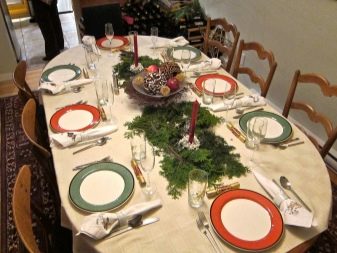
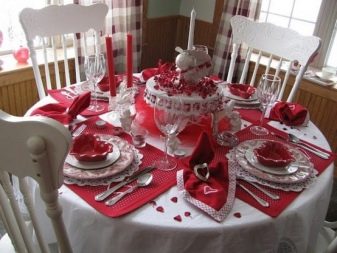
- Often a solemn meal is associated with the celebration of an event.... Here themed serving comes to the rescue. A New Year's or Christmas table is complemented by coniferous products and Christmas-tree accessories, sometimes serving is decorated with a combination of burgundy, red and green colors.
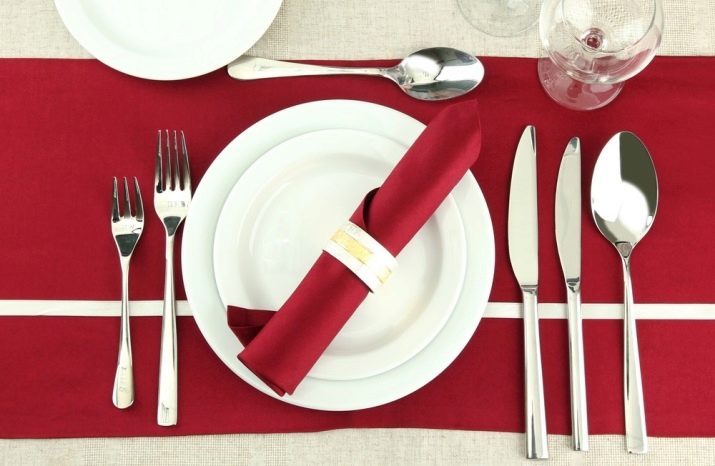
- For the autumn holidays tables are served with the addition of gems, small seasonal vegetables serving as accessories. The compositions are complemented by matching colors.
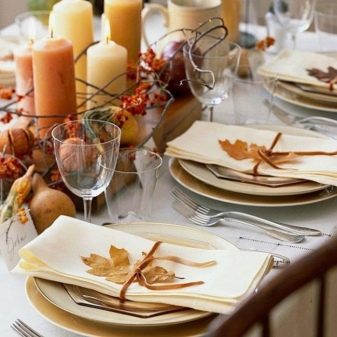
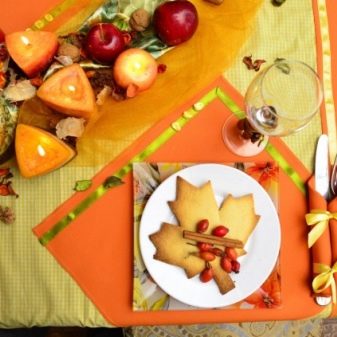
- Summer wedding celebrations complemented by light fabrics, delicate pastel colors and thin glass dishes.
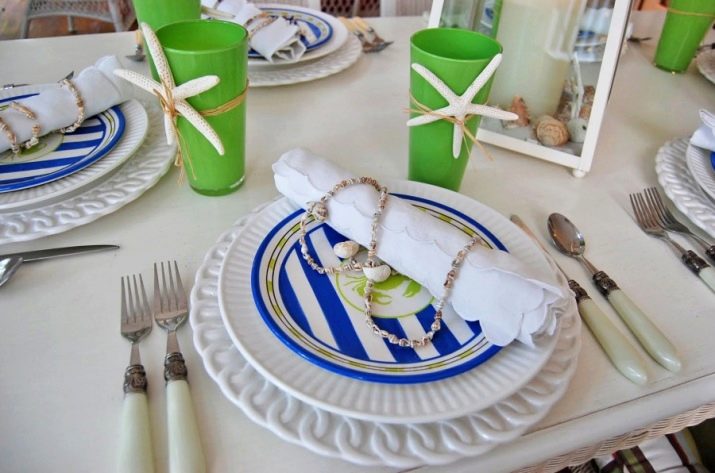
It is very important not to limit your imagination and to embody any creative ideas, applying knowledge in the design of the table. Any celebration begins with a competent table setting, which is sure to make a pleasant impression on all participants in the celebration.
You will learn more about which side of the plate the fork and knife are placed on according to the rules of etiquette in the following video.




